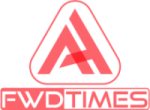What is the process for Monitoring for Legionella? There are a number of different methods.
Challenges of monitoring for Legionnaires’ disease
The monitoring for Legionnaires’ disease is mandated by the regulations for health care and aged-care facilities. These levels must be below 100 CFU/mL or a thousand CFU/L, whichever is lower.
The concentrations that exceed this level are considered a risk to public health, and require additional precautions such as biocide failure, testing for sanitary conditions, and risk analysis. ELITE laboratories are typically certified for detection and quantification of Legionnaires’ disease.
Many government agencies and state and local health departments have passed legislation that addresses Legionnaires’ disease. In addition, several federal agencies have developed enforceable policies on Legionnaires’ disease control in buildings under their jurisdiction.
The U.S. Department of Veterans Affairs and Centers for Medicare & Medicaid Services, as well as the New York City Health Department, have developed standards for Legionnaires’ disease control. Click here for more information. Building and plumbing codes can significantly influence Legionnaires’ disease transmission within buildings and the number of CFU/L thresholds.
The materials that are used for water systems are critical to the control of Legionnaires’ disease. These codes dictate the piping, devices, and joints that can be used. Manufacturers create a list of acceptable materials and try to avoid promoting the use of certain materials that leach compounds. However, robust studies are necessary to identify which materials are favorable to Legionnaires’ disease growth.
Regulations for Legionnaires’ disease in public buildings and healthcare settings were introduced in 1997. These regulations require health care facilities to implement Legionnaires’ disease culture-based sampling and management plans. This data will clarify how these regulations are helping prevent legionellosis.

Legiolert method
The Legiolert method of monitoring for Legionellosis has a few benefits over traditional Legionella test methods. The Legiolert method relies on bacterial enzyme detection technology to provide results in the form of a Most Probable Number (MPN).
The traditional test method requires the cooling tower owner to mail or transport samples to a laboratory for testing. This makes it costly and time-consuming to monitor bacteria levels in water to ensure that it is safe. Additionally, the delay from the test results to the results’ availability makes the test results unhelpful in controlling Legionellosis infection risk.
The Legiolert method of monitoring for Legionellosis eliminates the tedious steps of plate culture and offers a liquid culture medium that is closer to the bacterium’s natural water habitat. Legiolert reagent contains nutrients to promote growth of Legionella pneumophila bacteria as well as additives to suppress non-Legionella-pneumophila bacteria.
Additionally, Legiolert reagents contain an indicator that identifies the target bacteria. Because of these benefits, the Legiolert method is a highly cost-effective and time-efficient monitoring solution.
A study of the Legiolert method of monitoring for Legionellosis found that it outperformed the CDC method. The CDC method’s plates were completely unreadable because of extensive growth of non-Legionella organisms. The Legiolert tray was able to detect Legionella pneumophila as low as 1 organism per 100ml. This difference is significant in that the Legiolert method is more sensitive and accurate than the CDC method. Click the link: https://www.cdc.gov/legionella/index.html for more information about the CDC’s toolkit to prevent and treat Legionnaires’ disease.
A study of the Legiolert method of monitoring for Legionellosis showed that it was accurate enough for both non-potable and potable water samples. Its sensitivity was equivalent to or higher than the standard method and had a low false-positive rate of 0.5%. The Legiolert method was also easy to use, but it requires an additional incubator. Nevertheless, the study provides important precedents for future monitoring for Legionella in drinking water systems.
ASHRAE 188 standard
A WMP is a risk management plan that focuses on reducing the risks of legionella contamination in a building. In addition to implementing a WMP, a facility should identify areas of the building where Legionella can grow or spread.
ASHRAE 188 provides important guidelines for reducing the risk of Legionella. It requires building owners to institute a risk management program for water systems and implement control measures to prevent and control Legionella. It also specifies a comprehensive assessment of water systems and the risk factors that can contribute to the growth of the bacteria.
The ASHRAE 188 Standard is meant to be a starting point for a water management program and is intended to help building owners evaluate their buildings’ risks.

